
Kintaikyō: Iwakuni’s Historic Arched Bridge Combining Beauty and Function
Guideto Japan
Travel History- English
- 日本語
- 简体字
- 繁體字
- Français
- Español
- العربية
- Русский
Spanning the Nishiki River in Yamaguchi Prefecture, Kintaikyō is an elegant vestige of Iwakuni’s feudal past. The wooden arch footbridge, measuring 193.3 meters long, was built using only wood joinery and boasts three central arches that are set on stone piers without trestles supporting the arches from below. Together with the 200-meter Mount Shiroyama, atop which stands Iwakuni Castle, the setting of Kintaikyō and the Nishiki River is designated a national site of scenic beauty.
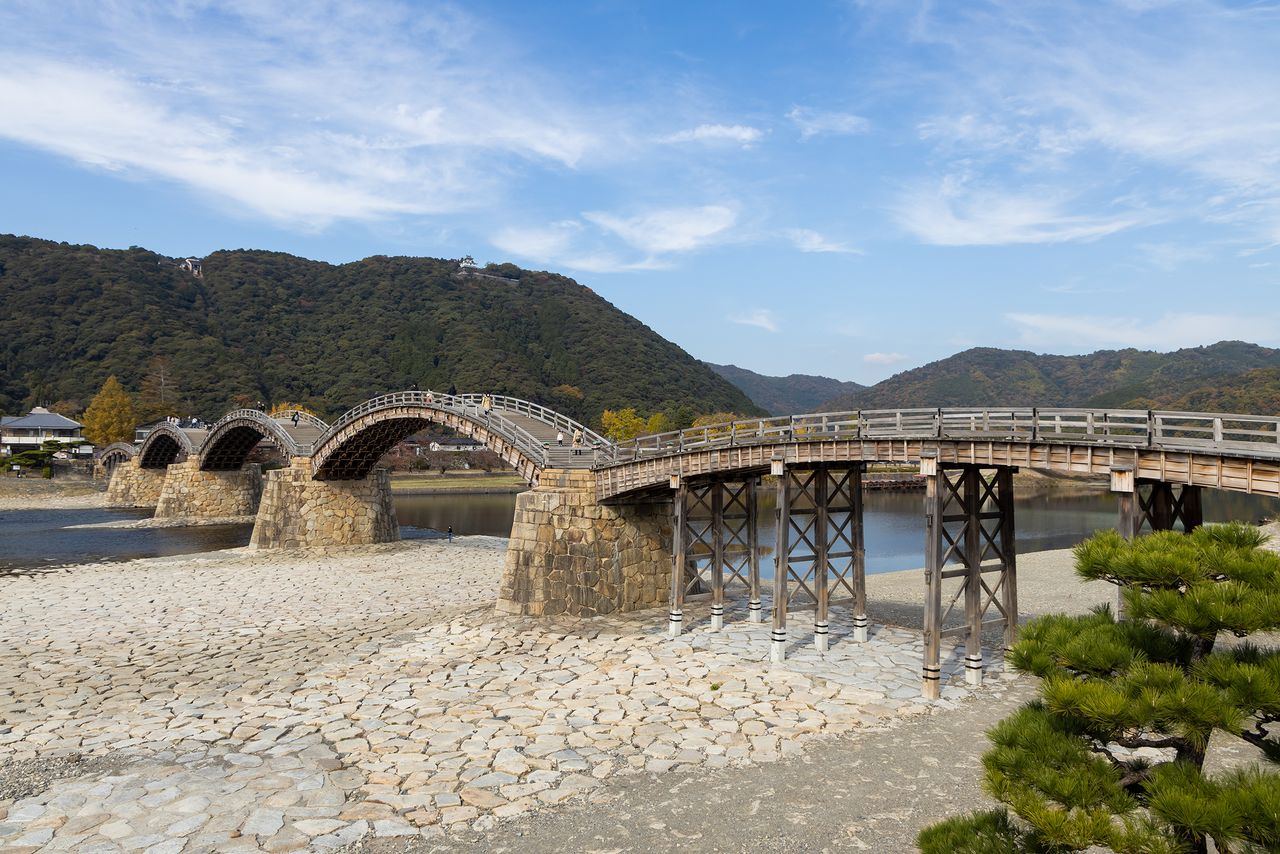
A view of Kintaikyō from the east bank of the Nishiki River. Iwakuni Castle stands atop Mount Shiroyama in the background.
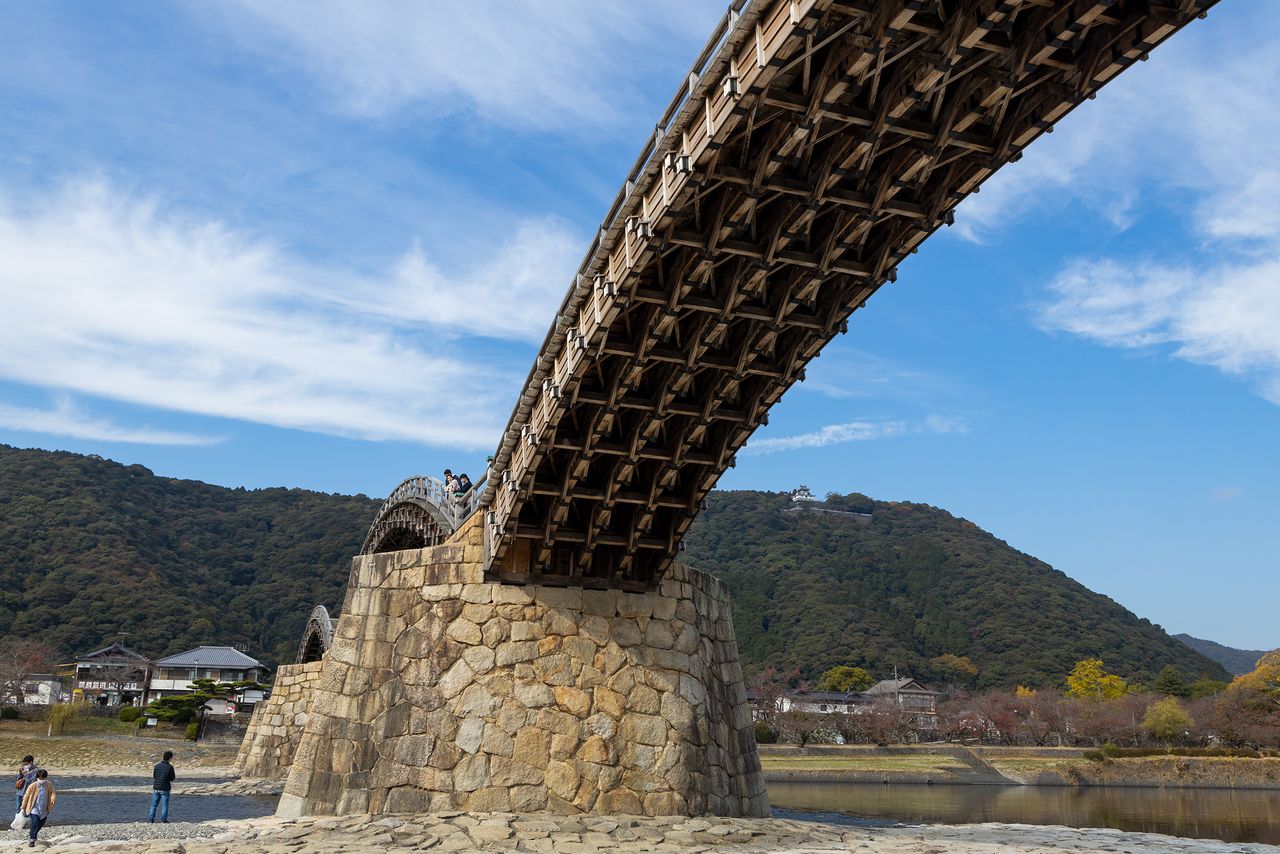
Viewing Kintaikyō from the riverbank reveals the intricate joinery techniques used in the bridge’s construction.
Castle and Town
It is easy to imagine that Kintaikyō was built with an eye for beauty, but in reality its design was dictated by the need to keep the bridge from washing away during floods.
The Kikkawa family, chief retainers to the Mōri clan that ruled the Chōshū domain (today Yamaguchi Prefecture), established their authority over the Iwakuni region early in the Edo period (1603–1868). Kikkawa Hiroie, first lord of the domain, used the Nishiki River as the outer moat for his castle, which he erected atop Mount Shiroyama in 1608. Clan administrative offices were located in the foothills at Yokoyama, where Hiroie also built his residence and those of his chief vassals.
Although the heights made the castle easy to defend, there was no room on that side of the river for barracks to house lower-ranking retainers. They instead were quartered on the east side of the river in the castle town, an arrangement that required them to cross the 200-meter-wide riverbed to reach their workplaces. Whenever there was flooding, though, the raging waters often swept the bridge away, forcing the retainers to cross the river in ferryboats.
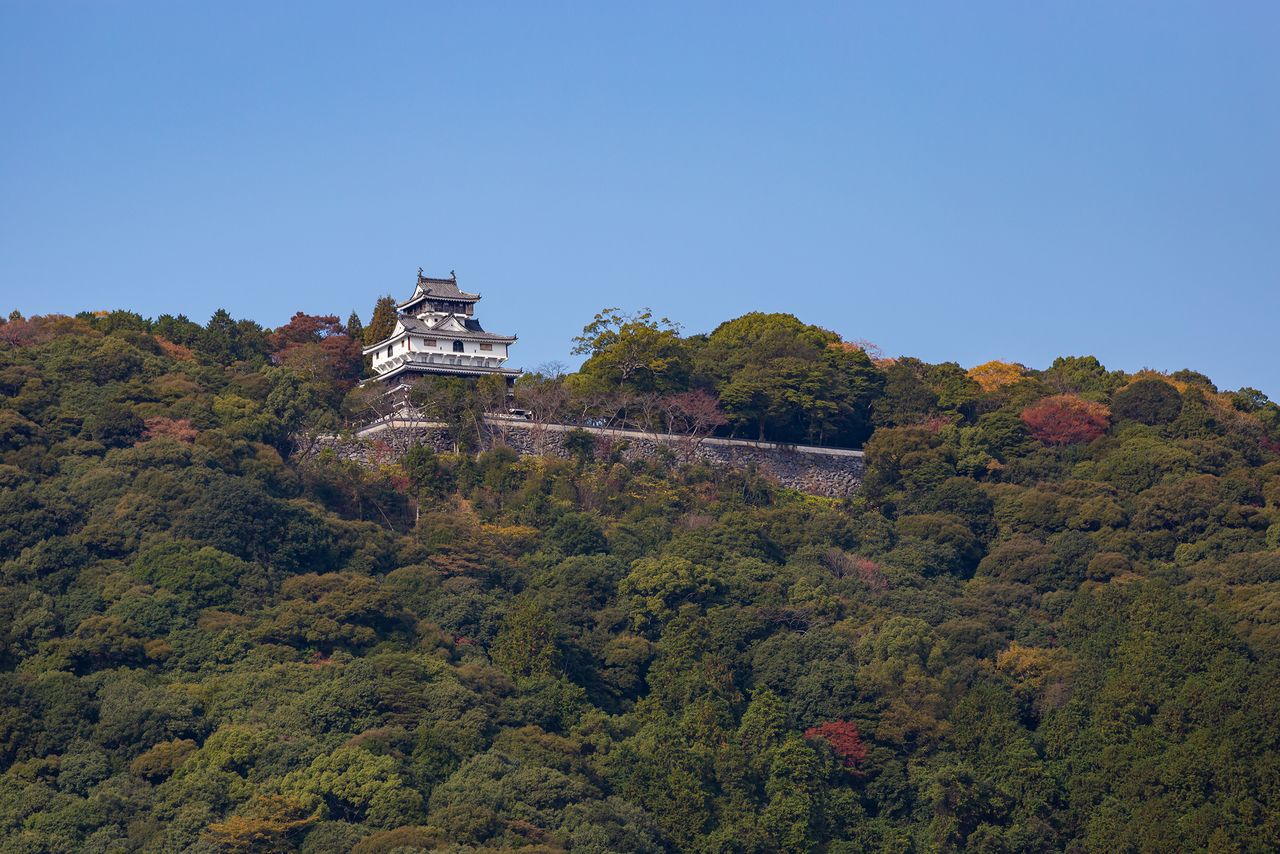
A view of Iwakuni Castle from Kintaikyō. The main keep was reconstructed in 1962.
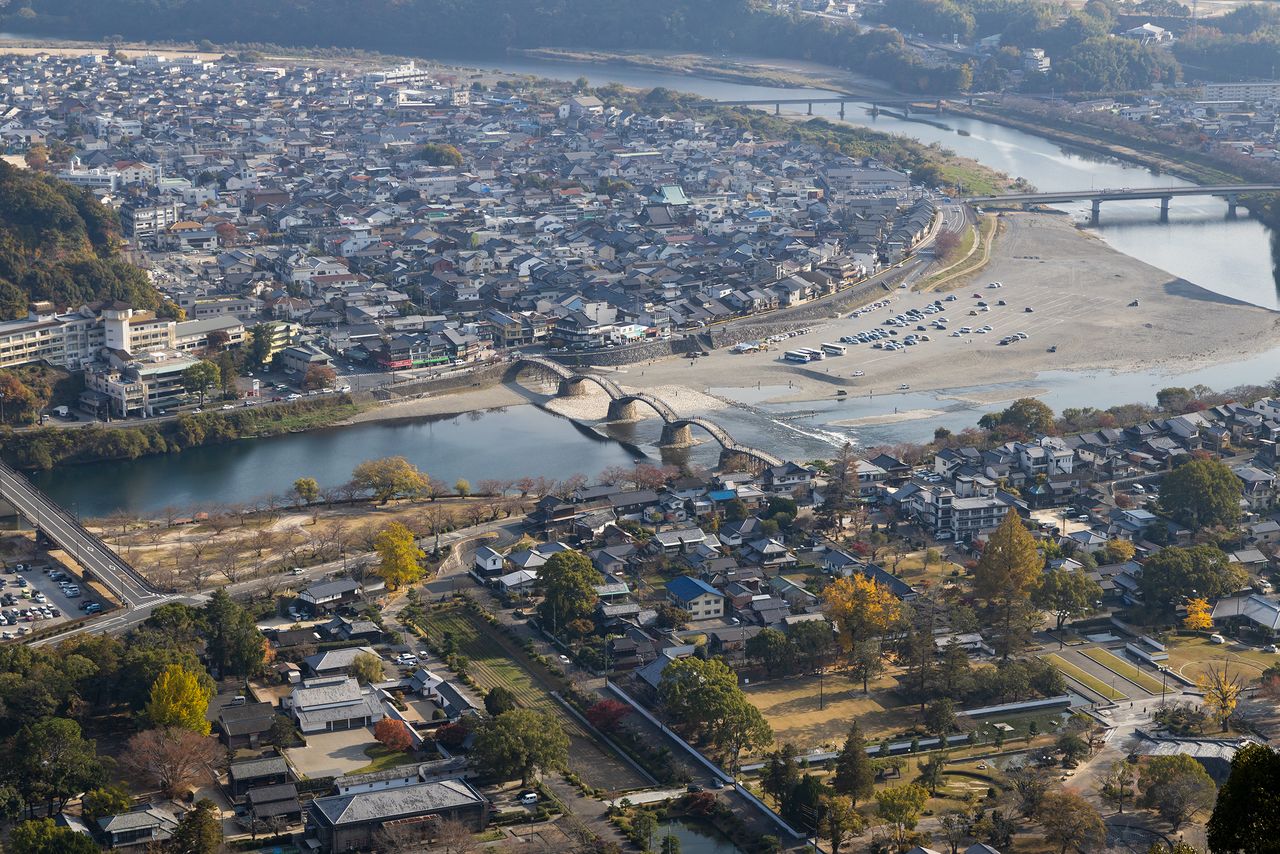
Kintaikyō, seen from the castle’s keep. In the foreground is Yokoyama, where the various clan offices were located. Lower-ranking officials and townspeople lived on the opposite side of the river.
A Flood-Proof Bridge
The third lord of the domain, Kikkawa Hiroyoshi, set out to finally build a flood-proof bridge. He hit upon the idea of using an arched design without trestles, but bridgebuilding technology at the time only allowed for short spans. As he cast about for a solution to the problem, a Chinese priest who had settled in Japan showed him a painting of West Lake in Hangzhou, China, that offered a hint. The painting featured a five-arched bridge with no trestles straddling four islets in a straight line. This gave Hiroyoshi the idea of building an arched bridge standing on stone piers in lieu of islets.
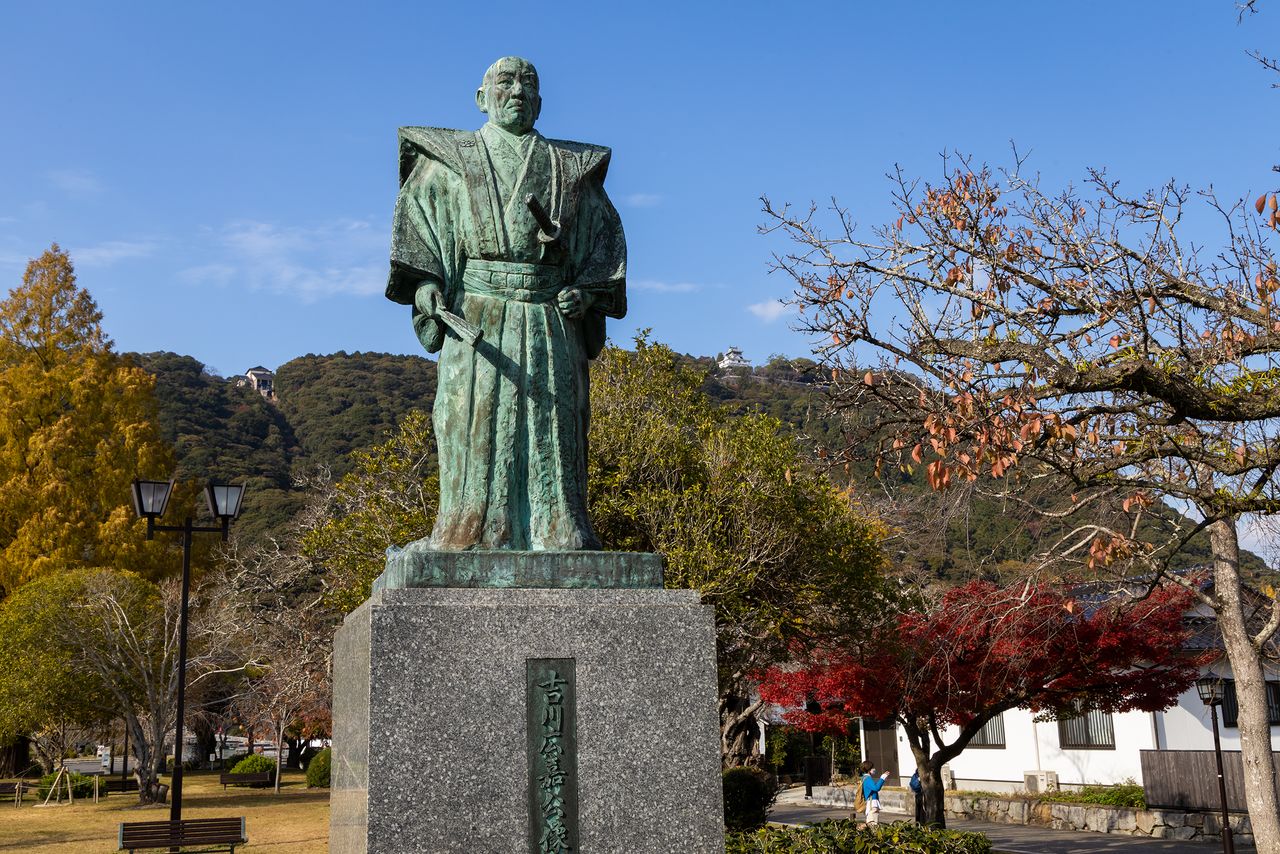
A bronze statue of Kikkawa Hiroyoshi stands in the Yokoyama district, on the west bank of the river.
The first bridge was completed in 1673, but was washed away by a flood the following year. It was soon rebuilt with stronger stone piers, further improved, and rebuilt periodically afterwards. It remained in place for 276 years before being destroyed when typhoon Kijia struck in 1950.
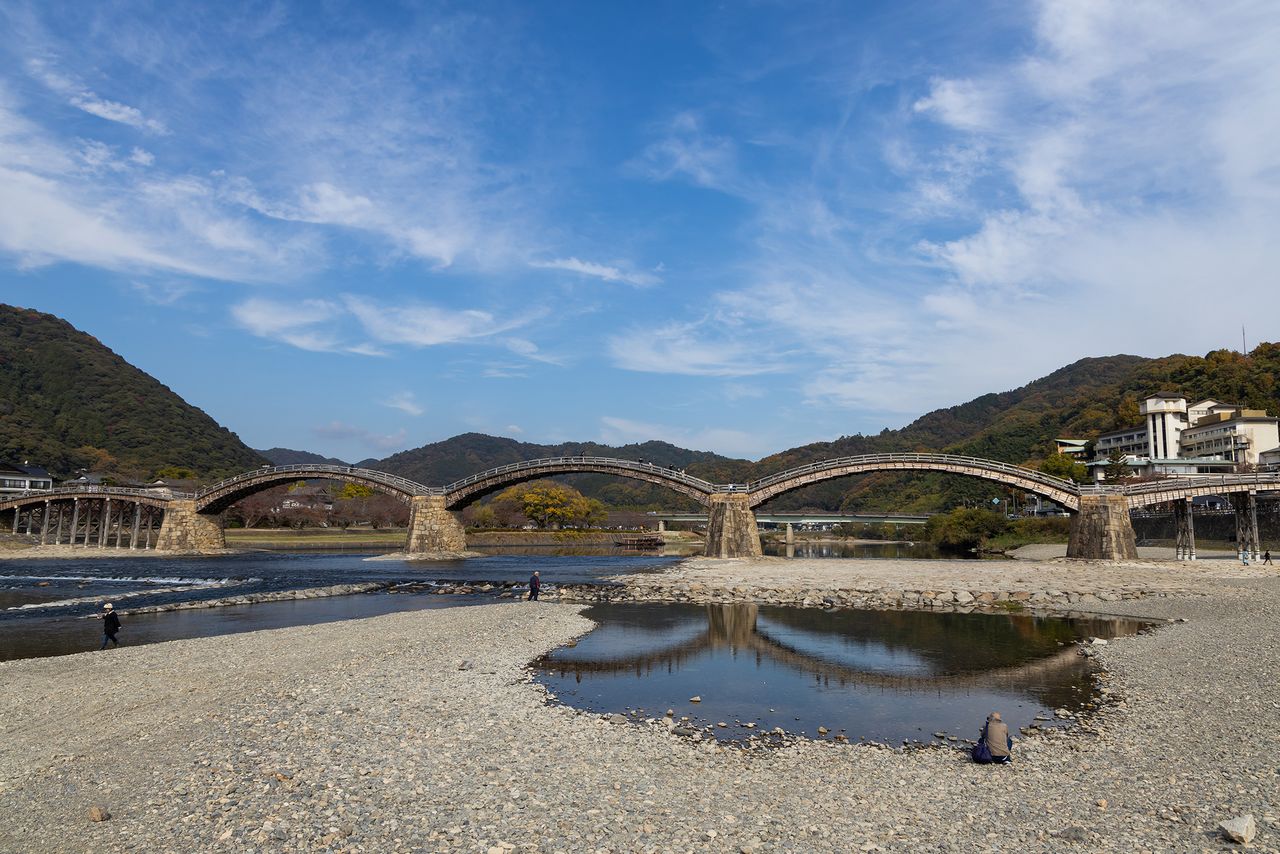
The elegant arches of Kintaikyō.
Beautiful Vistas: A Dream Come True
The current bridge dates from 1957. There were proposals to reconstruct it using concrete, but local opposition to the idea prevailed and it was built as a five-arch wooden bridge. The stone piers were made 1 meter higher and reinforced with steel and concrete.
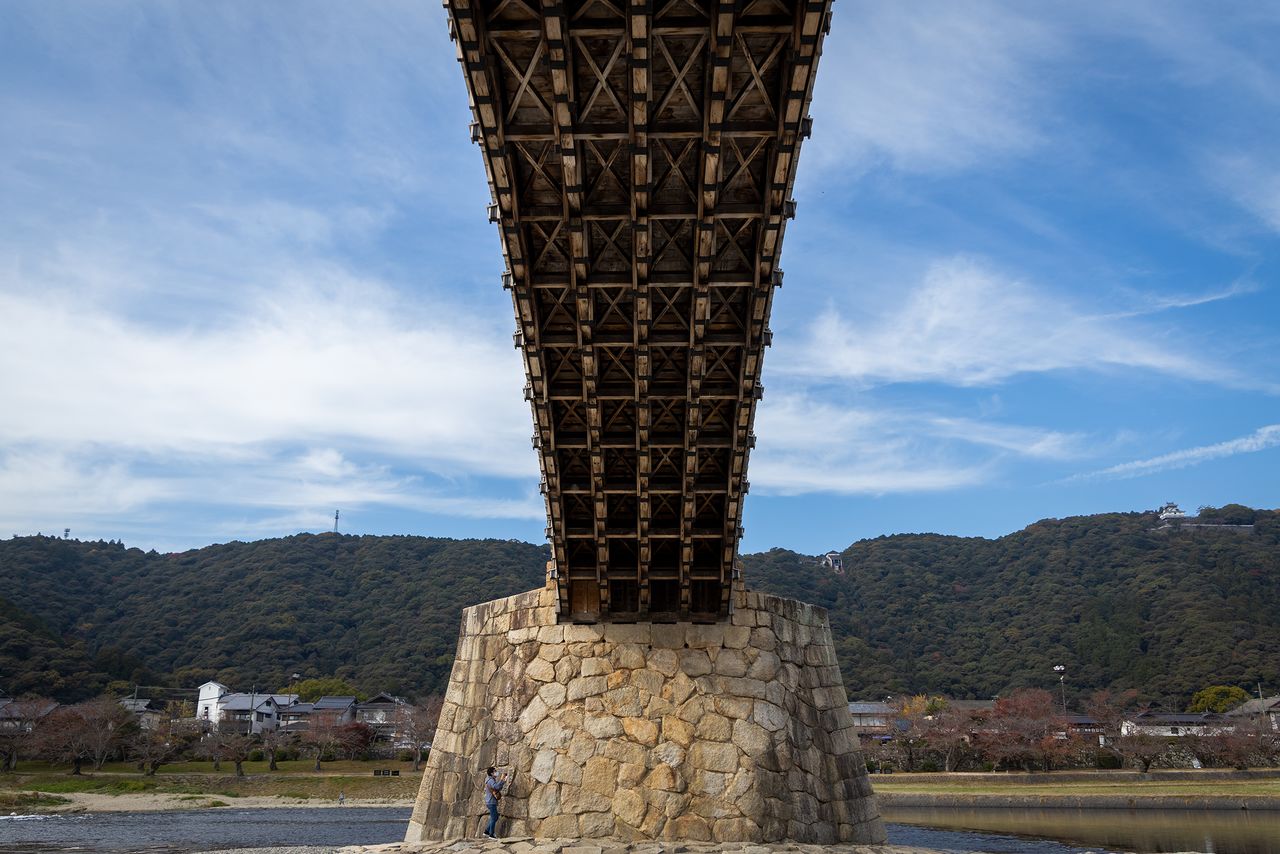
The piers are 6.6 meters high, with foundations sunk 10 meters into the riverbed. The construction of the crossbeams remains unchanged from the time of the bridge’s original construction.
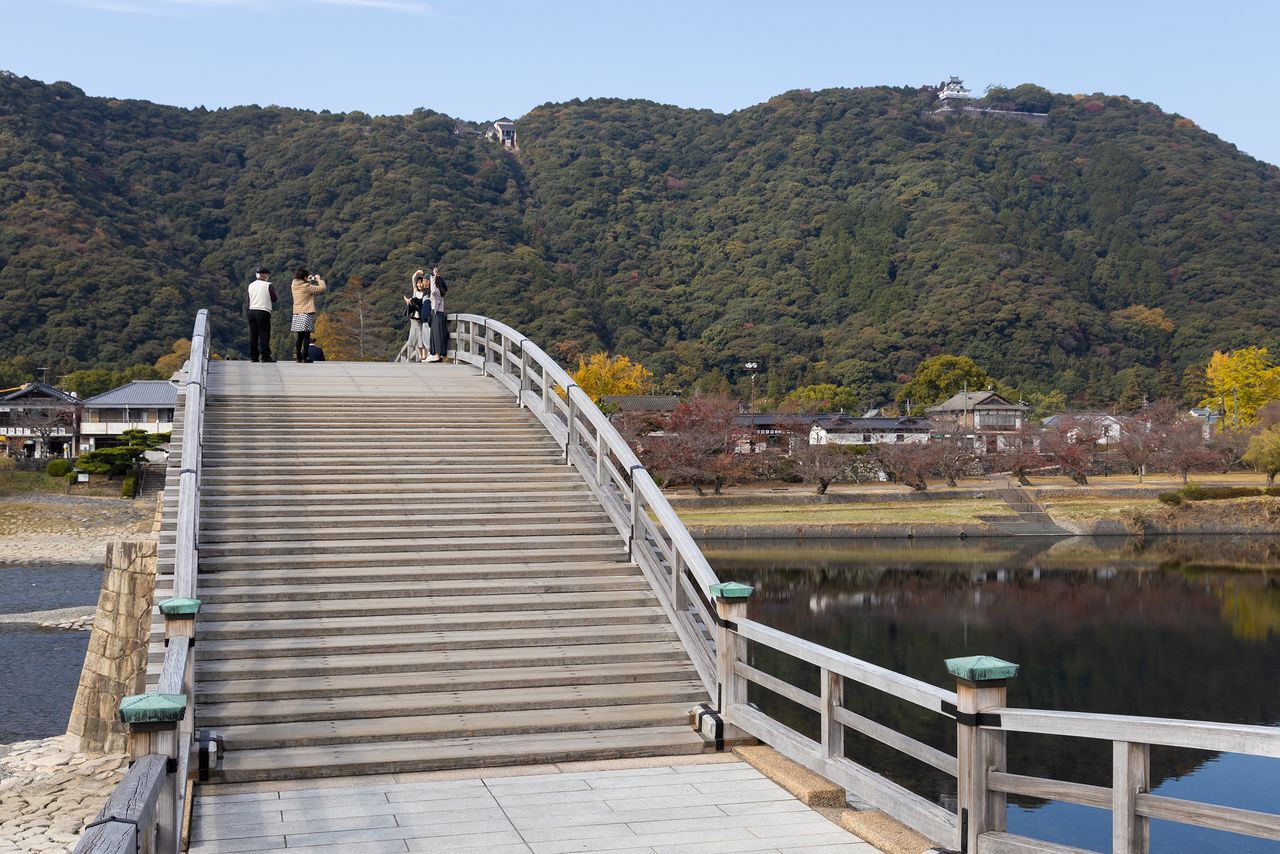
The bridge is 5 meters wide. Its wooden planks were replaced in 2004.
Kikkō Park in the Yokoyama district, which can be reached by crossing Kintaikyō, contains many historic structures of the Iwakuni domain, including remnants of the Kikkawa family residence. It is also the location of the Kikkawa Historical Museum and the Iwakuni Chōkokan Museum, which house historical documents and artworks. Adjacent to it is Momijidani Park, which was once the site of numerous temples, whose ruins can be seen today.
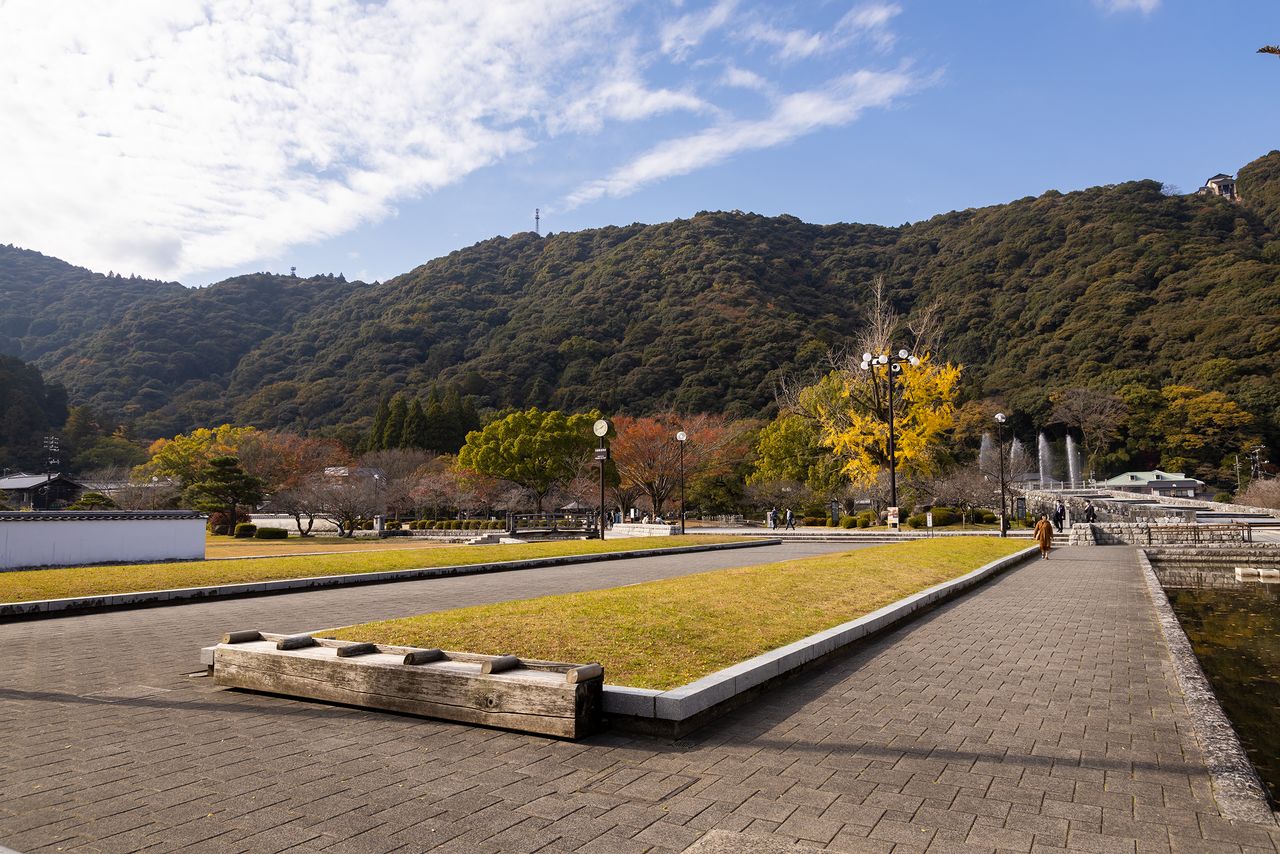
Kikkō Park is also a popular cherry blossom viewing site.
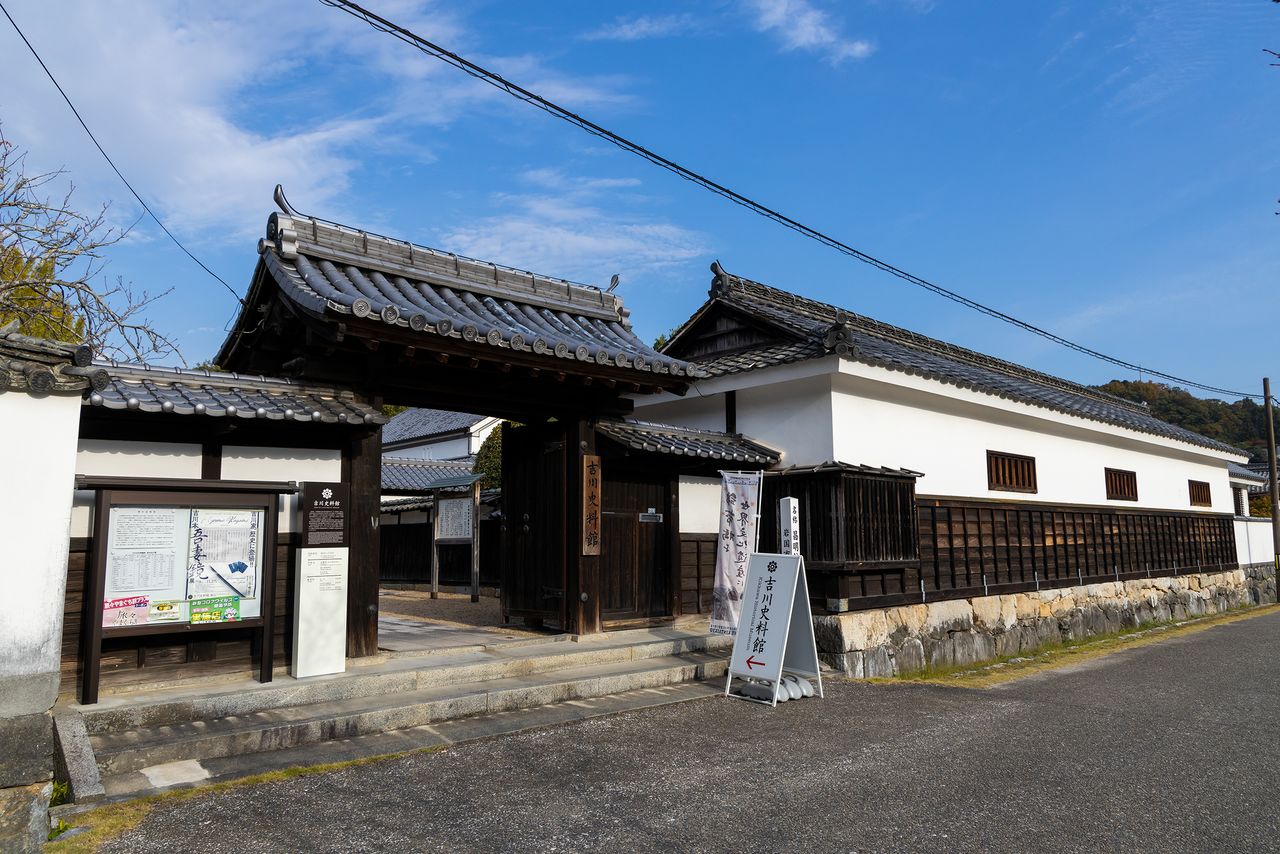
The Shōmeikan Gate, the entrance to the Kikkawa Historical Museum and adjacent buildings. Erected in 1793, the site is an important municipal cultural property.
Iwakuni Castle is reached via the Iwakuni Castle Ropeway and is a 10-minute walk from the ropeway’s mountaintop terminus.
During the Edo period, Iwakuni was self-governing and was even treated as a quasi-domain by the central government, although the Kikkawas always considered themselves vassals of the Mōri clan. In line with the edict mandating only one castle per domain, Iwakuni Castle was dismantled in 1615, only seven years after its construction. By the time Kintaikyō was completed, the castle’s main keep was no longer standing.
It is only in modern times that the scenery of the bridge and the castle in the distance came into being. Today, the site is the setting for numerous seasonal activities, including cherry blossom viewing, cormorant fishing, and firework displays.
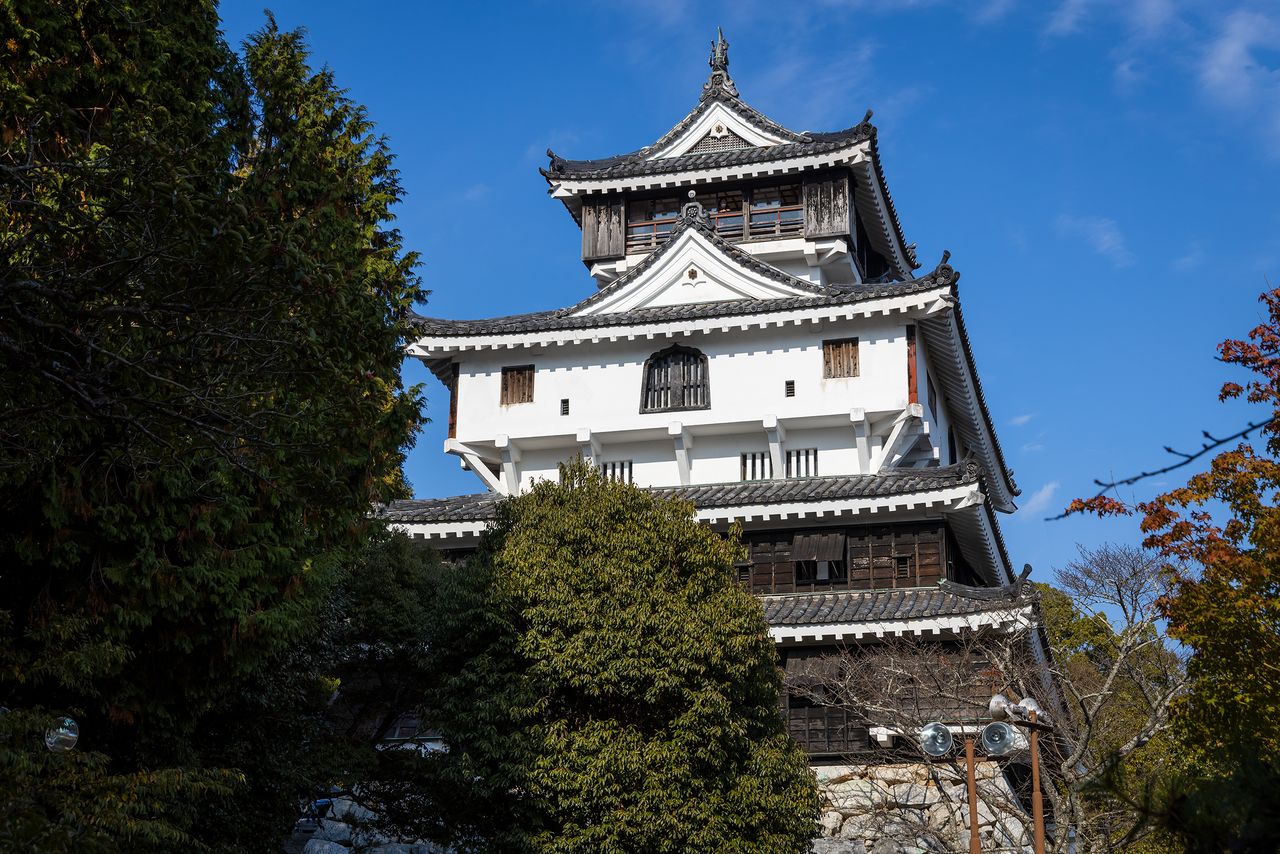
The castle was reconstructed with an eye on how it looked from the foothills below.
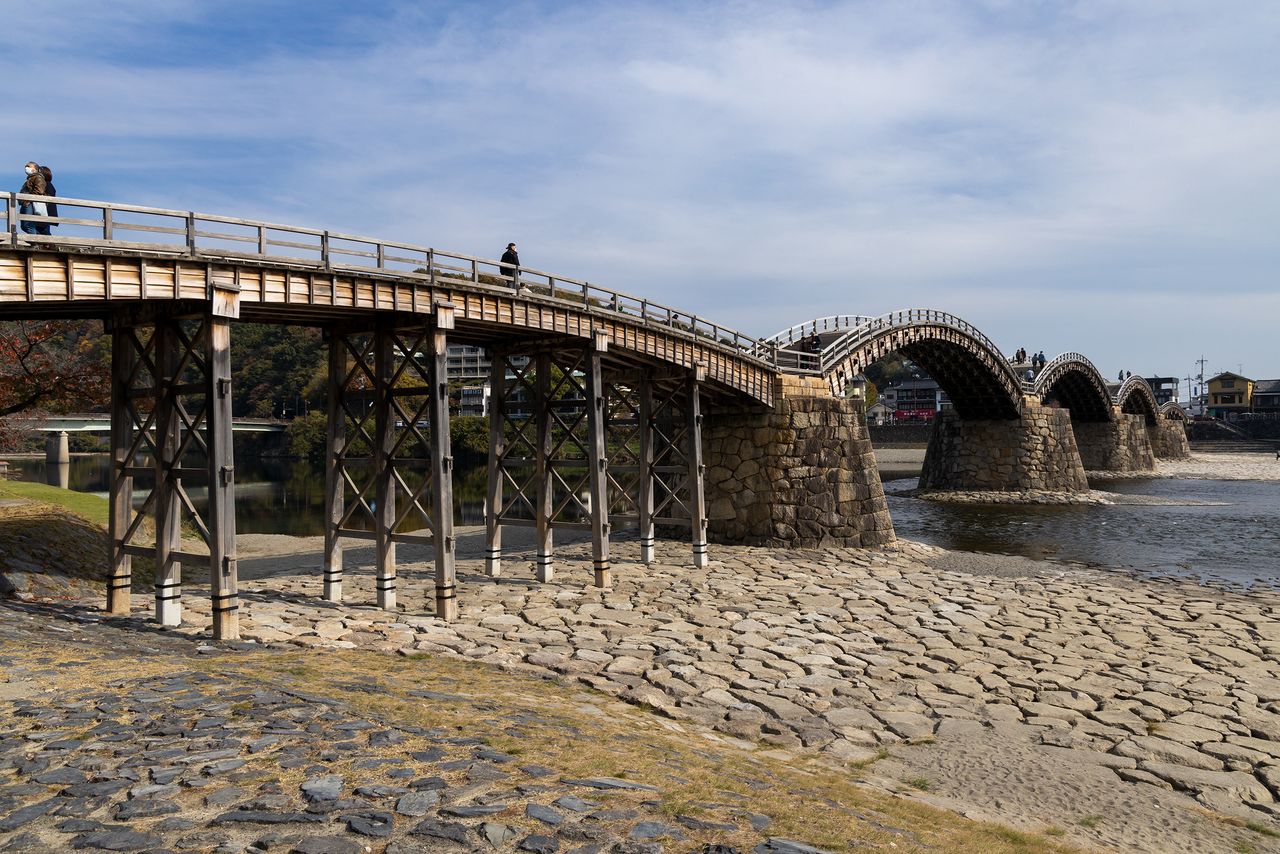
A view of the bridge from the west bank of the Nishiki River.
Kintaikyō
- Address: Iwakuni, Iwakuni, Yamaguchi Prefecture
- Hours: Open year round; a toll booth operates from 8:00 am to 5:00 pm (6:00 pm during tourist season and 7:00 pm in summer), and a nighttime toll box is set up to collect tolls after hours
- Fee: Adults ¥310, children ages 6–12 ¥150; a combination ticket also good for riding the Iwakuni Castle Ropeway is ¥970 for adults and ¥460 children